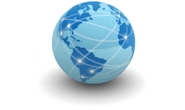Economy

Global PMI at 21 Month Low
Written by Sandy Williams
September 3, 2018
Global manufacturing was subdued in August said J.P. Morgan and IHS Markit. The J.P. Morgan Global Manufacturing PMI was at a 21 month low of 52.5 in August, down 0.3 points from July.
“August PMI data signaled a slight firming in global manufacturing output growth to a solid pace at near three percent annualized,” said David Hensley, Director of Global Economic Coordination at J.P. Morgan. “The survey suggests that the recent inventory drag has reached an end. However, we were disappointed to see the further decline in the new orders PMI.”
PMI readings improved in most nations covered by the survey but declines were noted in South Korea, Russia, Turkey, Thailand and Myanmar. Growth was solid in the U.S. and EU during August although rate of growth eased from July.
Manufacturing was stagnant in China and at the lowest level since June 2017. New orders globally were at a two year low and new exports orders were flat.
Prices for raw materials continue to be elevated and, in most cases, were passed on to clients as higher output charges.
Eurozone manufacturers saw business conditions soften in August. Improvements were noted in all EU nations except Italy which registered its worse PMI reading in two years. The IHS Markit Eurozone Manufacturing PMI fell to 54.6 from 55.1. New orders rose at a slower rate but manufacturing output was at a three month high. The slowdown of orders in the region corresponded with weakening of export trade
“Some of the slowdown in exports can be attributed to the appreciation of the euro since earlier in the year, but companies are also reporting signs of demand cooling and risk aversion intensifying,” said IHS Chief Business Economist Chris Williamson. “Worries about trade wars and the damaging impact of tariffs, as well as Brexit and other political worries, all contributed to a dampening of business optimism about the year ahead. Business expectations were the second-lowest since November 2015.”
The Caixin China General Manufacturing PMI hovered just above the no-change mark in August, posting a reading of 50.6 from 50.8 in July. Manufacturing output was higher last month in China but new orders and new export sales declined. Input costs rose at their second sharpest rate in seven months resulting in higher output charge. Lead times continued to lengthen along with supplier deliveries times. Concerns over the U.S.-China trade war kept business confidence subdued. “China’s economy is now facing relatively obvious downward pressure,” commented Dr. Zhengsheng Zhong, Director of Macroeconomic Analysis at CEBM Group.
The South Korea Nikkei Manufacturing PMI remained in contraction in August, increasing to 49.9 from 48.3 in July. Operating conditions have been in contraction for six months although a slight bump in new orders was noted in August. Margin pressure continued to rise exacerbated by a weak currency and higher raw material labor costs. Optimism was at its lowest level in a year.
“Notably, export orders fell at the sharpest pace in four months, with panelists reporting difficulties in acquiring new customers due to increasing global economic uncertainty,” commented IHS Markit economist Joe Hayes.
Manufacturers in Canada faced uncertainty about trade which impacted business growth in August. The PMI inched down to 56.8 from 56.9 in July. New order growth was at a four month low, despite higher export sales in the energy sector. Survey respondents reported U.S. trade tariffs harming market competiveness.
“The latest survey highlighted that steel and aluminum tariffs pushed up input costs and acted as a headwind to export sales in U.S. markets,” said Christian Buhagiar, President and SCEO, SCMA. “The rate of input price inflation was the steepest for almost seven-and-a-half years, which underpinned another strong increase in average prices charged by manufacturing companies.”
IHS Markit Manufacturing PMI dropped to a ten month low in Mexico, declining 1.4 points to 50.7. Factory output fell on input shortages, cash flow difficulties and subdued sales, said IHS Markit.
“PMI data for August highlighted a softer growth patch of the Mexican manufacturing sector, with new work, exports and employment all displaying weaker increases than recorded at the start of the third quarter. At the same time, production dipped into contraction territory,” said Pollyanna De Lima, Principal Economist at IHS Markit. “Nonetheless, the slowdown doesn’t yet ring alarm bells on growth prospects. When looking at anecdotal evidence supplied by respondents, it’s clear that production was hampered by material shortages, while a stronger upturn in input purchasing shows firms’ willingness to reverse the downturn trend in output in the near term.”
The United States IHS Markit Manufacturing PMI registered 54.7 in August, down from 55.3 in July. Output grew as new orders increased, including a slight expansion in new export sales. High input prices were blamed on tariffs that resulted in manufacturers increasing output charges for clients. Also contributing to higher prices were supply shortages, transportation woes and difficulty finding qualified labor. Attempts to build inventory to lock in lower prices and ensure supply added to escalating price pressure.

Sandy Williams
Read more from Sandy WilliamsLatest in Economy

Construction adds 13,000 jobs in March
The construction sector added 13,000 jobs, seasonally adjusted, in March, but tariffs could undermine the industry.

Supply chains, end-users brace for impact from tariffs
Supply chains are working through what the tariffs mean for them

ISM: Manufacturing expansion loses steam after two months of growth
US manufacturing activity slowed in March after two straight months of expansion, according to supply executives contributing to the Institute for Supply Management (ISM)’s latest report.

Chicago Business Barometer rose to 16-month high in March
The Chicago Business Barometer increased for the third-consecutive month in March. Despite this, it still reflects contracting business conditions, as it has since December 2023.

Durable goods orders rise again in February
Transportation equipment led the increase, rising 1.5% to $98.3 billion.
